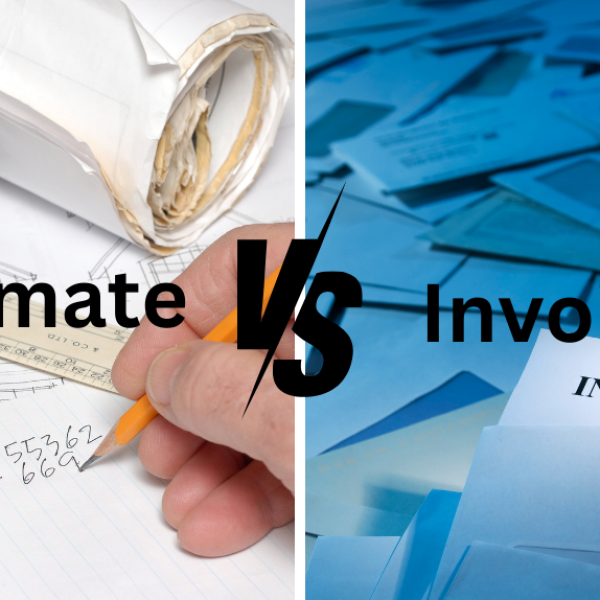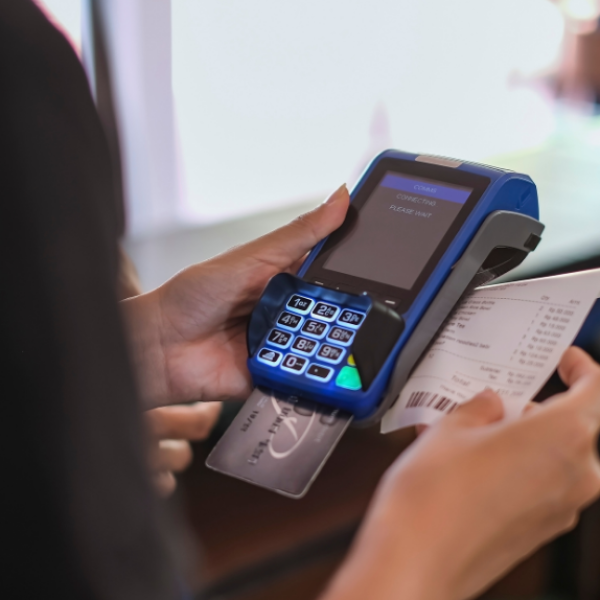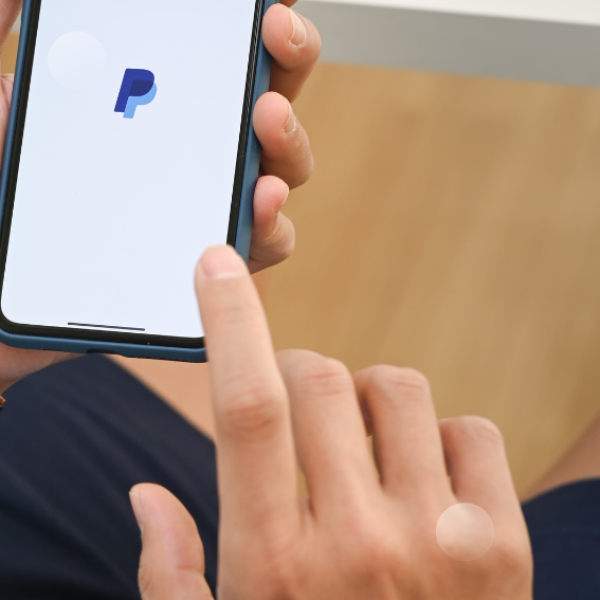Having a credit card declined is always an unpleasant experience. Customers often feel frustrated by the delay in their purchase and embarrassed, concerned that others might view them as irresponsible spenders. Merchants, however, understand why a credit card might be declined and some standard credit card decline codes. Some issues can be quickly resolved, while others may require a different payment method or specific actions as directed by the card issuer.
To effectively handle a declined credit card and recover possible transactions, merchants must be well-versed in the decline codes they receive and understand what they signify. Let’s explore the most common decline codes and how merchants should react upon encountering them.
In This Article
ToggleWhat is Card Authorization?
Card authorization verifies that a cardholder has adequate funds or credit to complete a purchase they are attempting to make. This process occurs behind the scenes during the card transaction’s processing.
Customers may swipe, tap, or insert their card into a card reader during an in-person transaction. For online purchases, the customer enters their payment details as prompted. The transaction information is then sent from the business’s terminal to its acquirer, the acquiring bank, and the financial institution representing the business.
The acquirer forwards the transaction details to the appropriate card network and ensures the funds are deposited into the correct account. The acquirer also sends a request to the card issuer or issuing bank, which is the institution that issued the card to the cardholder.
The issuer then checks the cardholder’s account to determine whether sufficient funds or enough credit are available for the transaction. If the funds are available, the issuer transfers the amount from the cardholder’s account to the acquirer and deposits it into the business’s account.
What is a Credit Card Decline Code?
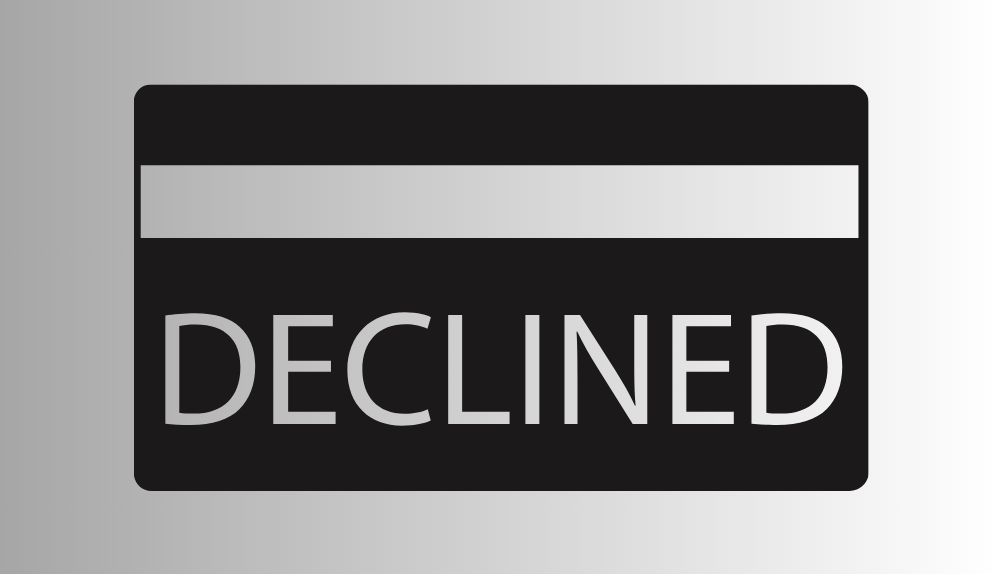
A negative response is sent when a transaction request, such as a credit card decline code, cannot be processed. This rejection can occur at various stages by the payment processor, gateway, or the customer’s issuing bank.
When a customer swipes their card or presses “submit,” the transaction isn’t immediately approved. Instead, the processor forwards this information to the issuing bank for authorization. Typically, the bank will authorize the transaction, allowing the sale to proceed. However, the bank may also reject transactions that trigger specific concerns.
The most common reasons a bank would reject a transaction are fraud or insufficient funds, but there are many more. The bank will provide a two-digit credit card refusal number that explains why the authorization was rejected.
Why Do Credit Card Decline Codes Happen?
Although merchants prefer the straightforward ‘Approved’ message during transactions, over 100 different decline codes can appear when a transaction is denied. Some of these codes prompt merchants to immediately stop the transaction and request an alternative payment method from the customer. Others may signal a more serious concern, advising merchants to halt the sale altogether due to suspected fraud associated with the customer’s payment card.
The frequency of card declines can vary by region, card type (credit or prepaid card), transaction type, and Merchant Category Code (MCC).
Failure to adhere to recommendations from their acquirer regarding declined transactions can lead merchants to lose revenue through fraud and chargebacks. This impacts their financial standing, can damage their reputation, and potentially result in losing repeat customers. Low payment acceptance rates can deteriorate the customer experience, introducing unnecessary friction and uncertainty at checkout, which may ultimately erode brand loyalty.
Common Credit Card Decline Codes Explained
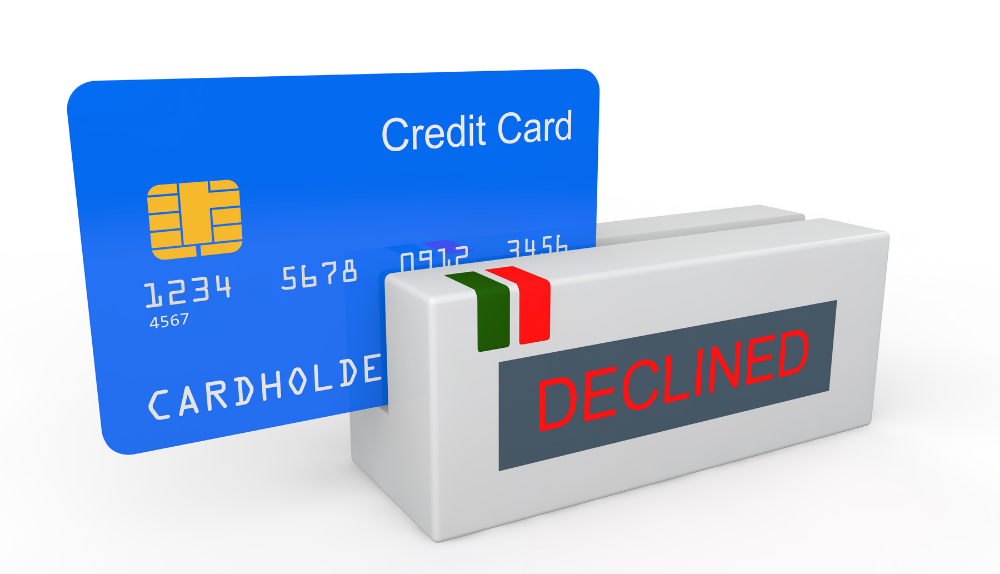
- Do not honor | Code 05: The customer’s bank refuses to process the payment. The customer should contact their bank for more information before attempting the transaction again.
- Invalid card number | Code 14: This often indicates a typographical error. Verify the credit card number and try entering it again.
- Lost card, pick up | Code 41: The card has been reported as lost. Decline any services to the individual attempting the transaction and ask your customer for an alternative payment method, especially if it’s recurring.
- Stolen card, pick up | Code 43: This card has been reported stolen, and the bank is blocking the transaction. Refuse any services to the individual attempting the transaction and request a different payment method from your customer for future transactions.
- Insufficient funds | Code 51: The customer has exceeded their credit limit, and the payment cannot be processed. They should contact their bank to discuss increasing their limit or provide an alternate payment method.
- Exceeds issuer withdrawal limit | Code 61: This code appears when a cardholder has surpassed the withdrawal limit imposed by their bank, which could be due to overdrawing their account or exceeding their allocated withdrawal limit for the day. In such cases, it’s advisable for the customer to either try a different credit or debit card or contact their bank to inquire about extending the limit.
- Activity limit exceeded or insufficient funds | Code 65: When a cardholder exceeds their credit limit or a transaction might cause them to exceed that limit, the card is declined. Before making the purchase again, customers should be advised to try another credit card or speak with their bank about ways to lower their balance or raise their credit limit.
- Invalid CVV | Code 97: This code means that the card security code (CVV) entered does not match the one on file with the issuing bank. Customers should double-check the CVV and try entering it again or use an alternative card if the issue persists.
- Customer requested stop of specific recurring payment | Code R0 or R1: This code means the customer has instructed their card issuer to halt specific recurring payments to you. Stop the recurring payment schedule immediately to avoid chargebacks, and contact your customers to discuss whether they wish to continue the arrangement or restart the payments.
What is the Difference Between Soft Credit Card Declines and Hard Credit Card Declines?
Understanding the distinction between soft and hard credit card declines is essential before exploring the most common decline codes and their implications.
Soft Credit Card Declines
A soft credit card decline occurs when a temporary issue prevents authorization during a payment attempt. According to Checkout.com, 80-90% of all credit card declines fall into this category.
Soft declines can happen due to various reasons, such as issues with payment processors or gateways, unusual spending patterns triggering card issuer verification, insufficient funds in the cardholder’s account, using the card in a foreign country, incorrect billing address entered by the customer, or failing Strong Customer Authentication (SCA) checks. In such cases, the merchant may try the transaction again once the issue is resolved. It is beneficial for the merchant to be familiar with the causes of these declines as it can help with quicker troubleshooting.
Hard Credit Card Declines
Hard credit card declines happen when there is a definitive reason a card cannot be used, typically indicated by the card issuer. Common reasons include an expired card or a card reported as lost or stolen.
Retrying the transaction is futile with hard declines as it will consistently fail. Recognizing these decline codes lets merchants save time by advising customers immediately to provide alternative payment methods.
Complete List of Credit Card Decline Codes
| Code | Description | Recommended Action |
| 00 | Approved and completed successfully | None required |
| 01 | Refer to issuer | Customer should contact their card issuer |
| 02 | Refer to issuer (special condition) | Customer should use another payment method or contact their issuer |
| 03 | Invalid merchant | Do not honor the transaction, contact the issuer, and hold the card |
| 04 | Pick up card (no fraud) | Merchants should retain the card and ask customers to contact their bank |
| 05 | Do not honor | Customer should try another payment method or contact their issuer |
| 07 | Pick up card, special condition (fraud account) | The customer should verify the transaction details and retry |
| 12 | Invalid transaction | The customer should re-enter transaction details |
| 13 | Invalid amount | Verify the amount and retry the transaction |
| 14 | Invalid card number | Customer should re-enter their card details correctly |
| 15 | No such issuer | Re-enter the card details correctly |
| 19 | Re-enter transaction | Customers should use an alternative payment method |
| 41 | Lost card, pick up | Merchants should retain the card and ask customers to contact their bank |
| 43 | Stolen card, pick up | Merchants should retain the card and ask customers to contact their bank |
| 51 | Insufficient funds | Customers should use a valid card |
| 54 | Expired card | Customers should use a different card or payment method |
| 57 | Transaction not permitted to cardholder | The customer should retry the transaction or use a different payment method |
| 61 | Exceeds issuer withdrawal limit | Customer should try a different payment method or contact their bank |
| 62 | Invalid service code, restricted | Merchants should ensure compatibility with the card type used |
| 63 | Security violation | Customer should re-enter their card details correctly |
| 65 | Activity limit exceeded | Customer should use another payment method or contact their bank |
| 91 | Issuer or switch inoperative | Customer should retry the transaction later or contact their card issuer if the issue persists |
| 96 | System error | Cancel all future payments related to that card number to prevent chargebacks. Contact the customer to resolve any issues and confirm if they wish to continue or resume the recurring payment schedule. |
| R0 | The customer requested a stop of specific recurring payment | The customer requested stop of specific recurring payment |
| R1 | The customer requested a stop of specific recurring payment | Similar to R0, this code indicates that the customer has requested to halt specific recurring payments. The same actions as for R0 should be taken: cancel future payments and communicate with the customer for clarification and resolution. |
How to Avoid Card Declines?
The repercussions of card declines for businesses are significant. To minimize these negative impacts, companies can adopt several proactive strategies:
- Regular Card Updates:
Encourage customers to regularly update their card details, mainly the expiration dates, and to replace expired cards promptly.
- Verify Card Information:
To minimize mistakes, incorporate systems that check the accuracy of card numbers and other payment details at the checkout stage.
- Address Fraud Concerns:
Work with payment processors to set up effective fraud detection systems to pinpoint and prevent potentially fraudulent transactions.
- Customer Communication:
Develop effective communication channels with customers to quickly resolve payment-related issues and assist with card decline problems.
- Payment Gateway Optimization:
Select a dependable payment gateway that features real-time authorization and fraud prevention capabilities.
- Customer Education:
Inform customers about the importance of keeping sufficient funds in their accounts, activating their cards, and regularly monitoring their accounts for any unusual activities.
What to Do When a Sale Can’t Be Recovered?
Sometimes, specific credit card decline codes mean a sale is irretrievable. In these instances, the best strategy is to retain the customer and encourage future purchases. Establishing a personal relationship with buyers can be particularly valuable.
As previously noted, having their card declined can be quite embarrassing for a legitimate buyer. To maintain their loyalty and provide reassurance, consider sending a personalized response beyond a standard template. Your outreach should:
- Apologize for any inconvenience caused (regardless of whose fault it is).
- Clearly explain in straightforward terms why the transaction might have been declined.
- Offer assistance in resolving the issue and facilitating the continuation of the transaction.
- Consider offering a small discount or other incentive to encourage a future purchase.
Conclusion
Understanding credit card decline codes is paramount for both merchants and customers alike. While declined transactions can lead to frustration and inconvenience, they often indicate underlying issues that can be addressed with the proper knowledge and actions. By familiarizing themselves with standard decline codes and their implications, merchants can efficiently navigate these challenges and minimize their impact on revenue and customer satisfaction.
Similarly, customers can proactively avoid declined transactions by keeping their card information current and monitoring their accounts for suspicious activity. By working together and maintaining open lines of communication, both parties can mitigate the negative consequences of credit card declines and ensure smoother transactions in the future.
Frequently Asked Questions
What are credit card decline codes?
Credit card decline codes are specific codes from card issuers that indicate why a transaction couldn’t be processed. They help merchants understand issues like insufficient funds or suspected fraud and guide them on how to proceed with the transaction.
What does the decline code ‘Do Not Honor’ (Code 05) signify?
The ‘Do Not Honor’ decline code means the issuer chose not to approve the transaction without disclosing the reason. Merchants should advise customers to contact their issuer for details or try a different payment method.
What should a merchant do if a card is declined due to being reported lost or stolen (Codes 41 and 43)?
If a card is declined due to loss or theft, merchants should stop the transaction, retain the card if possible, and alert the appropriate authorities. These codes are issued to prevent fraud and protect both parties.
How can merchants handle a credit card decline due to insufficient funds (Code 51)?
Merchants should inform customers of the insufficient funds and suggest alternatives, such as using another payment method or contacting their bank. It’s important to help resolve the issue or extend credit limits.







